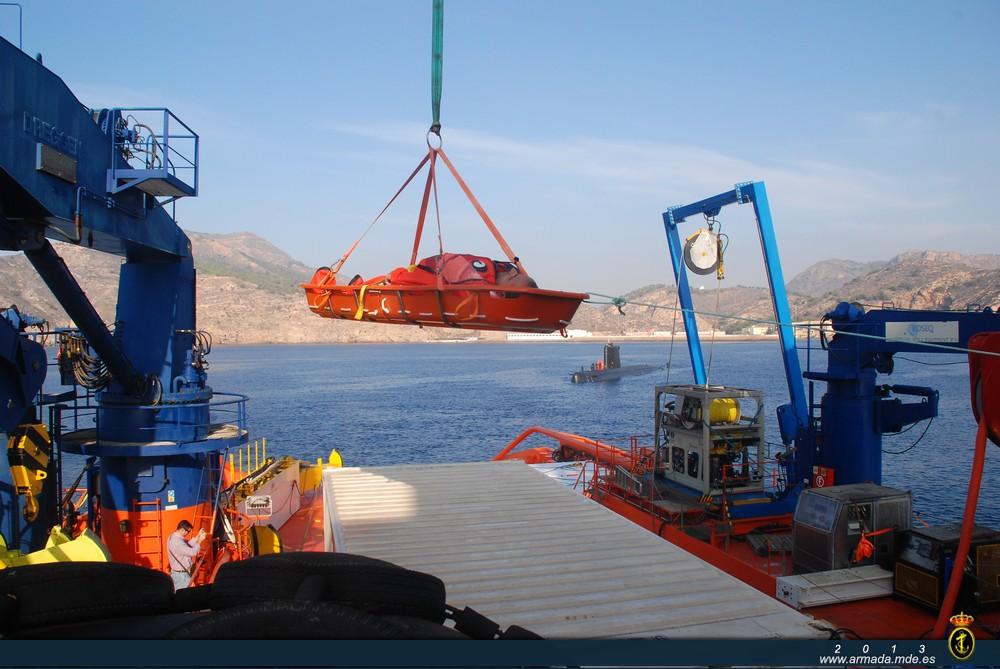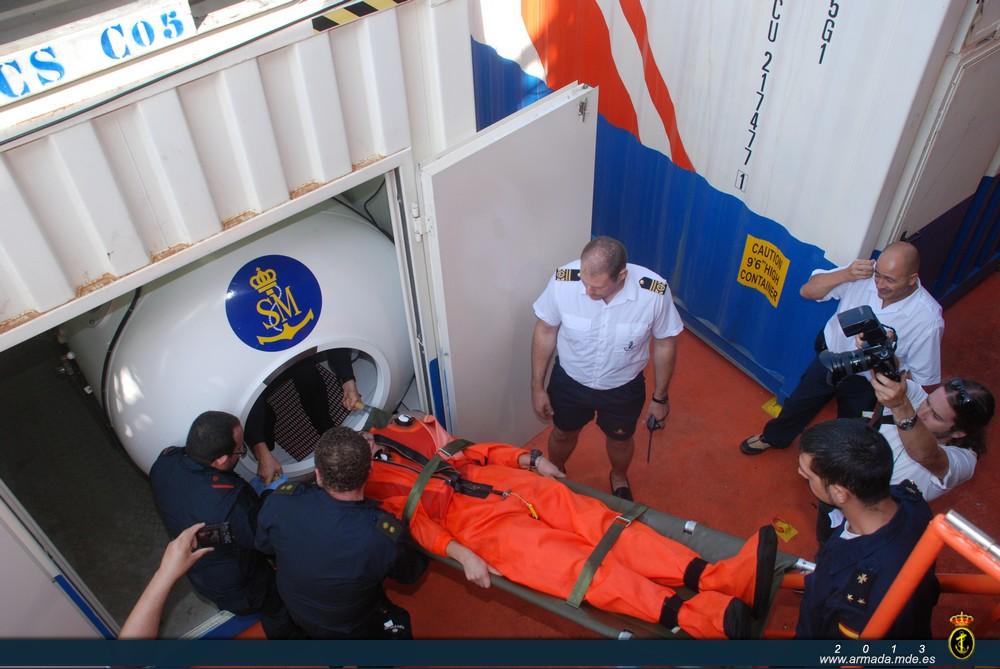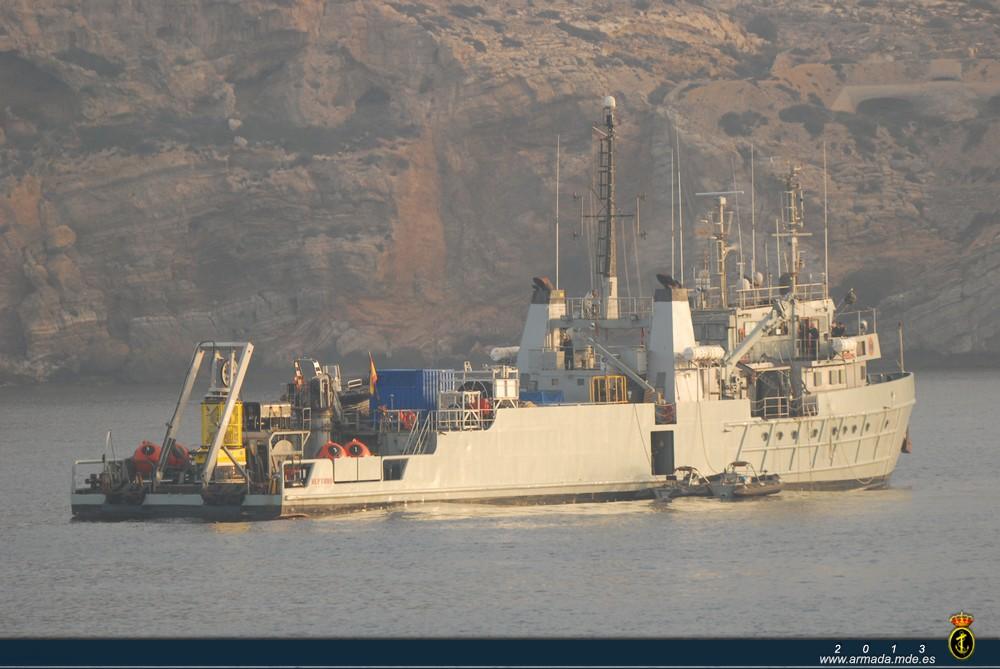The Spanish Navy carries out submarine save-and-rescue drills.
Thursday, October 24, 2013
 + 2
+ 2

Between the 21st and 25th of October, the Spanish Navy is organizing the exercise ‘Cartago 2013’ off the coast of Murcia, intended to implement national save and rescue procedures for submarines.
During these days several search, saving and rescue drills will be carried out simulating all required procedures to rescue a damaged submarine, deploying the necessary naval and maritime assets.
The Spanish Navy contributes with the following units: submarine ‘Galerna’, minehunter ‘Segura’, SAR ship ‘Neptuno’ and the offshore patrol vessel ‘Cazadora’. The Staffs of the following Headquarters also participate: General Staff (Madrid), the Fleet (Rota), Submarine Flotilla and Maritime Action Force (Cartagena). The Maritime Search and Rescue Society (SASEMAR) will collaborate with the SAR ships ‘Clara Campoamor’ and ‘Salvamar Mimosa’, as well as a helicopter.
One of the main goals of exercise ‘Cartago 2013’ is to enhance the coordination between Spanish Navy units and other civilian departments and agencies, should a real submarine emergency occur.
Loss of contact with the submarine
On Monday the 21st a medical evacuation drill of submarine personnel will be carried out near the Algameca Naval Station. Fifteen crew members will simulate different injuries and will be evacuated. The purpose of the exercise is to improve training in medical issues (management, treatment, evacuation). The medical personnel will embark on the ‘Clara Campoamor’ and the ‘Neptuno’.
Next day the submarine ‘Galerna’ will simulate an accident off the coast of San Pedro del Pinatar lying on the seabed. After receiving the alert, all SAR elements will start the scheduled operating procedures.
In order to establish communication with the submarine, a Spanish Navy helicopter and a Special Naval Warfare team will deploy and start initial contacts. Once the situation is thoroughly assessed the Spanish Navy, in coordination with SASEMAR, will dispatch the minehunter ‘Segura’, the rescue ship ‘Neptuno’ and the SAR ships ‘Clara Campoamor’ and ‘Salvamar Mimosa’.
The following days the two stages known as PODEX and VENTEX will be executed with the submarine lying on the bottom. These stages consist in the transfer of the necessary materiel to the submarine and the ventilation of the submarine atmosphere from the surface.
Rescue of the crew and refloating of the submarine
On Friday 25th five crew members will be rescued through the fore floodgate. This maneuver will be attended by special divers, medical personnel and hyperbaric chambers should they be required. An ICU will also be deployed.
Then, a team of divers from the ‘Neptuno’ will connect air pumps into the ballast tanks to expel the ballast from the tanks. The air blown will help surface the submarine from a depth of 12 meters. With this operation the exercise ‘Cartago 2013’ will conclude.





